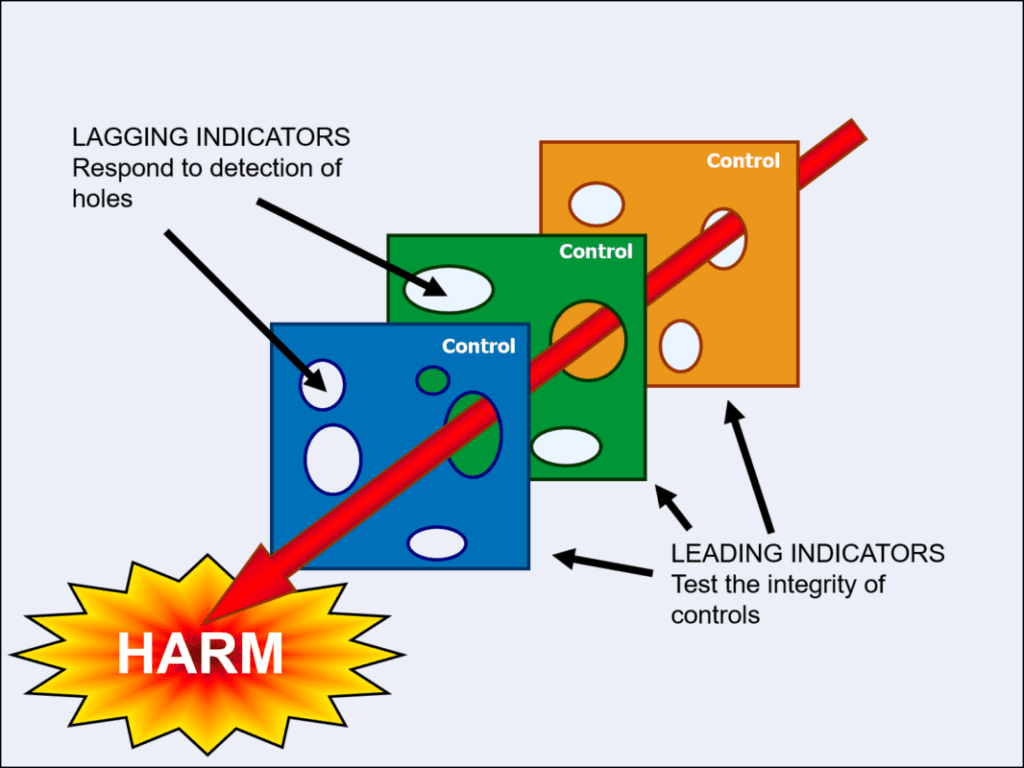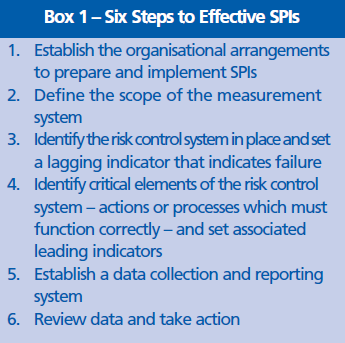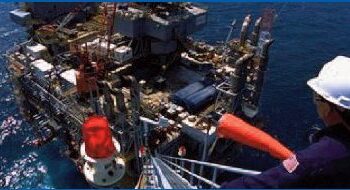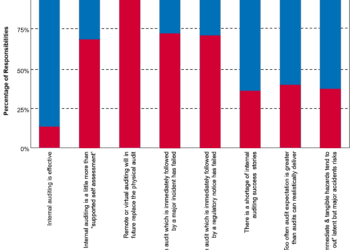Measuring safety – safety related key performance indicators
Many of us are familiar with the concept of Key Performance Indicators (KPIs) as a simple way of indicating how organisations are performing against targets, whether they relate to production, finance or safety. Safety Performance Indicators (SPIs) in particular are notorious for focusing on the negative things that have happened in the workplace, with indicators such as lost time injuries (LTIs). But such measures record outcomes only (they are ‘reactive’) and provide little or no insight into underlying trends and are very poor indicators of the potential for major accidents.
GUIDANCE GALORE
Recognising this situation, in 2006 the UK Health and Safety Executive (HSE) issued a guidance note on the subject [Ref 1] following the investigation into the BP Grangemouth incident in 2000 and subsequent research. The US Centre for Chemical Process Safety (CCPS) of the AIChemE published its guidance [Ref 2] in 2007 following the Texas City explosion in 2005. The Organisation for Economic Cooperation and Development (OECD) meanwhile updated its guidance in 2008, building on the experience of the UK HSE [Ref 3]. Furthermore, the UK Fire and Blast Information Group (FABIG) held a Technical Meeting in 2008 on SPIs.
All of this guidance is consistent in approach – the aim is to develop performance indicators that help operators see how well they are managing their major accident risks.
SETTING SPIs
As with all KPIs, SPIs fall into two types – leading and lagging. Lagging indicators are in common use and tend to consider things that have gone wrong, while the challenge is to develop meaningful leading indicators – things that give an early warning sign that all is not well. Prof. James Reason’s ‘Swiss cheese’ model of accident causation says major accidents result when a series of failings in risk control systems occur at the same time – the holes in the Swiss cheese slices line up [see Fig 1].

Figure 1 – Safety Performance Indicators and the Swiss cheese model
The leading indicators are there to identify the failings through routine checking, to plug the holes before an accident occurs. The lagging indicators reveal the holes through the occurrence of incidents, accidents or defects at which point action can be taken to prevent recurrence.
The HSE describes a 6 step approach to developing and using SPIs [see Box 1].

SO WHAT DOES IT ALL MEAN?
In the UK the HSE has decided to change the way it regulates the control of major hazards [Ref 4]. Now, inspections will focus on the risk control measures claimed by operators and their related SPIs.
It is important to define SPIs that not only demonstrate the hazards are being properly controlled, but are also useful to the operator and not just a ‘box ticking’ exercise to satisfy the regulator. Moreover, they should not demand so much data collection and complex analysis that they become impractical and fall into disuse. As with most KPIs, simpler is better.
‘Bow-tie’ or barrier diagrams are one of the best methods for understanding risk control systems, and a powerful approach to identifying leading SPIs would be to ensure every control system on the diagram has a relevant measure. Such indicators might be associated with the completion of equipment checks, proof tests, maintenance, and personnel training within specified timeframes.
Outside the UK the work by the AIChemE and the OECD show that SPIs are being taken seriously internationally. Within the oil and gas industry, for example, it seems likely that SPIs will find a place in the reporting systems of major companies to allow worldwide performance comparisons.
CONCLUSION
Developing effective SPIs is not necessarily straightforward. Operators should be wary of creating an unwieldy system where counting becomes more important than action. Nevertheless, a more balanced approach to SPIs that considers leading as well as lagging indictors should aid both regulators and operators in identifying and filling holes in the management of major hazards.
References
1. HSE, Developing Process Safety Indicators, HSG254, 2006.
2. CCPS, Process Safety Leading and Lagging Metrics, 2007.
3. OECD, Guidance on Developing Safety Performance Indicators, 2008.
4. www.hse.gov.uk/comah/remodelling/index.htm
This article first appeared in RISKworld Issue 17.







